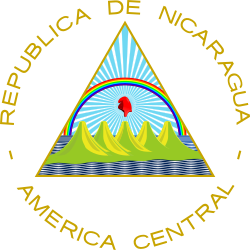 |
|---|
General elections were held in Nicaragua on 6 November 1932 to elect the president, half of the seats in the Chamber of Deputies and one-third of the seats in the Senate of the National Congress.
Contents
Matthew Hanna, the US minister in Nicaragua secured an agreement from the two presidential candidates in the 1932 elections, the conservative Adolfo Díaz and the rehabilitated constitutionalist vice-president, Juan Bautista Sacasa, that the National Guard should become a "non-political" force after US withdrawal. [1]
"The presidential election in 1932 also was supervised by the United States and the results were surprisingly similar to those of 1928: 76,269 for the Liberal Juan Bautista Sacasa and 53,845 for the Conservative Adolfo Díaz. Sacasa's election in 1932 was particularly rewarding for Liberals, because it installed in the presidency a man whose rights to that office had been violated by the Chamorro coup of 1925 when Sacasa was vice-president of the republic." [2]
Anastasio Somoza García was appointed head of the Nicaraguan National Guard in late 1932 as U.S. occupation forces were being withdrawn after their futile attempt to defeat Augusto César Sandino's antioccupation and revolutionary guerrilla movement. Breaking with the political neutrality of the officer corps enforced under U.S. tutelage, Somoza García and his uncle, President Juan Bautista Sacasa, began to appoint officers with Liberal Party loyalty". [3]
The election took place under the supervision of the United States. [4] The Conservative Party expected that the United States would tilt the election in their favor. [4] However, the United States did not intervene in the election. [4] Consistent with previous agreements, the United States withdrew all forces from Nicaragua in January 1933. [4]